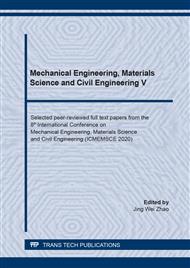p.31
p.40
p.49
p.56
p.61
p.69
p.77
p.82
p.87
Failure Analysis of an Aluminum Earphone Connector due to Corrosion
Abstract:
Earphones are often exported to foreign countries by sea as consumer goods. In view of the humid marine environment, the earphone packaging box is often placed with anti-mold chips to prevent mold, while the volatilization of the anti-mold chips will also cause corrosion problems. In this study, a large number of aluminum earphone connectors were corroded in the process of ocean transportation, and the corrosion products were located in the left earphone connector close to the anti-mold chips. It’s determined that sulfate and nitrate ions lead to the corrosion of the aluminum connectors, and these are the volatilization products of the anti-mold chips. This conclusion was further confirmed by the simulation test, which was carried out on the anti-mold chips and aluminum connectors at 85 °C, 85% RH humidity for 72 h. The aluminum connectors were obviously corroded, and the morphology and composition of the corrosion products were the same as those on the actual earphones. The corrosion was successfully prevented by a PTFE coating on the surface of aluminum connectors. Keywords: Earphones; Anti-mold chip; Aluminum; Corrosion; PTFE coating
Info:
Periodical:
Pages:
61-68
Citation:
Online since:
June 2021
Authors:
Keywords:
Price:
Сopyright:
© 2021 Trans Tech Publications Ltd. All Rights Reserved
Share:
Citation:


